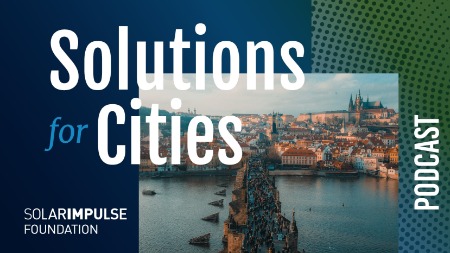News - December 16, 2022
Analyzing cities as living organisms


Written by Metabolic 2 min read
A sustainable and circular world can only be achieved through understanding cities as living organisms in which their health can be measured, by what can be termed urban diagnosis or urban scanning. By measuring and improving the metabolism of cities, we can reduce resource dependency (input) and waste generation (output), thereby eliminating the negative feedback loops that drive current structural vulnerabilities.
In recent years, the availability of data has increased with the digitization of almost every aspect of urban life. Despite this trend, many cities remain a "black box" in which it is almost impossible to trace the flows (both in and out) and the processes followed by resources. The lack of collaboration between all the various actors in cities makes it extremely difficult to understand the interactions that occur on a more holistic level.
Making a city’s use of materials and energy (more) circular requires a cross-sectoral collaboration that would allow a better understanding of the city’s metabolism and lead to greater city-wide harmony.
Each actor must take ownership of the resources used and ties must be created between the resources and the surrounding environment. To this end, city governments are well positioned to play the role of convenors between private and public actors.
Urban scanning is a key tool to solving the presented challenges. It is based on the analysis and diagnosis of our 7 Pillars of the Circular Economy: material flows, energy consumption and production, water usage, biodiversity, cultural access, health and wellbeing and value creation. By linking these topics to their main challenges (and the metrics attached to them), we can quickly evaluate the health of a city or region and therefore find the solutions or interventions needed. This data-based diagnosis helps us to understand a city not only in absolute values but also in comparison to other cities.
The case of Charlotte, NC, United States
In 2018, Metabolic developed an urban scan to turn Charlotte, North Carolina (USA) into a circular city. Thanks to this work, there are now five times as many circular businesses in Charlotte, resulting in 15% diversion of waste from landfill, 492 new jobs, and $34 million in revenues. Furthermore, it led to the creation of an Innovation Barn that showcases circular practices in action.
The cases of Milan, Amsterdam, Paris, Cluj-Napoca and Vejle
During the Horizon 2020 REFLOW Project, Metabolic performed an urban metabolism scan for one different flow in each one of the five pilot cities: Milan, Amsterdam, Paris, Cluj-Napoca, and Vejle. In Amsterdam, the textile value chain was studied and circular interventions (e.g., reusable medical gowns, Swapshop) arose from the project in which a multitude of stakeholders were involved across the value chain. The partnerships and analysis led to the potential reduction of 6,000 tons of CO2-eq over the textiles’ life cycle should both solutions be scaled over a five-year period.
Discover more, including other contributions by leading organisations in the Solutions Guide for Cities
The Solutions for Cities Initiative

Written by Metabolic on December 16, 2022


